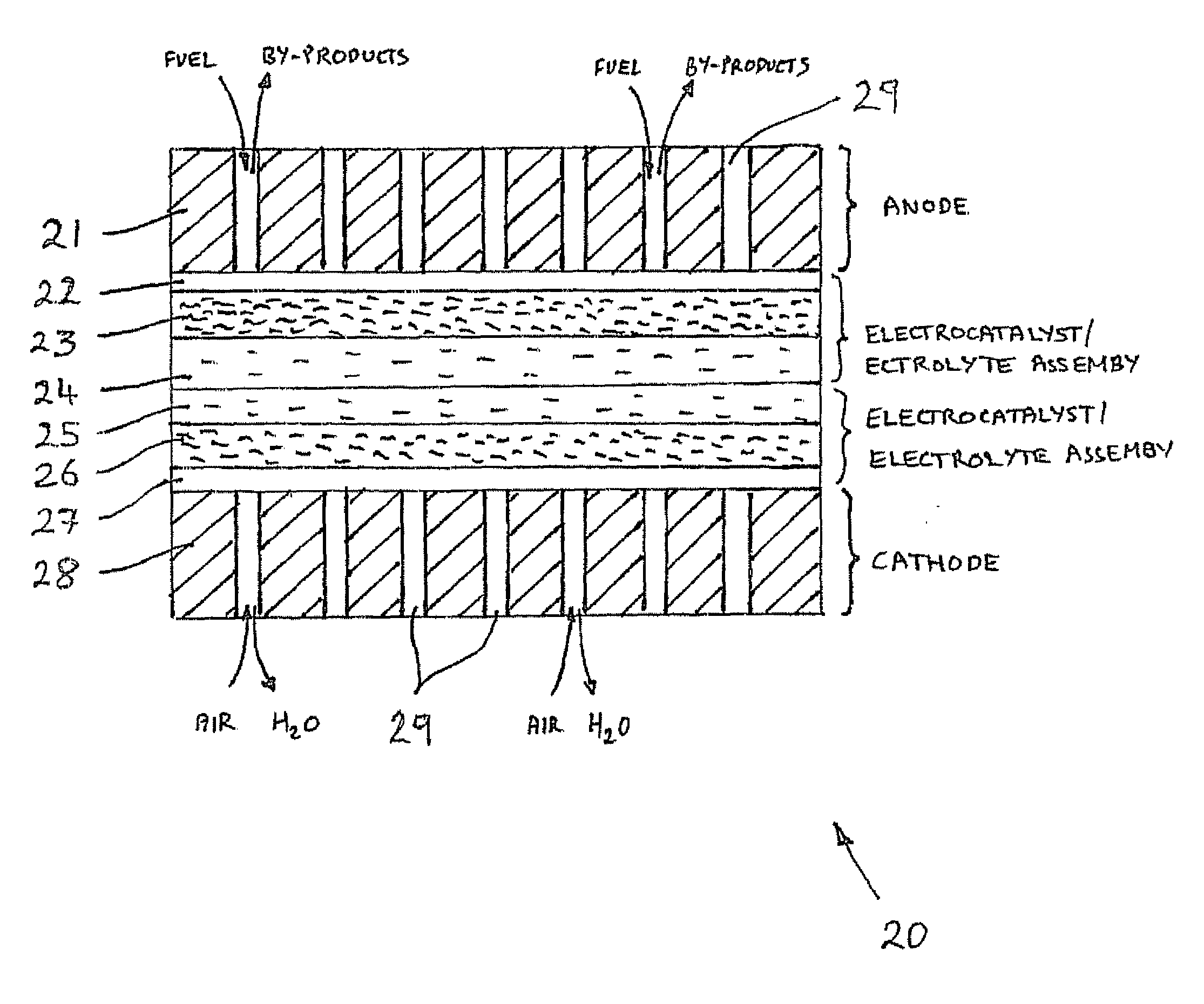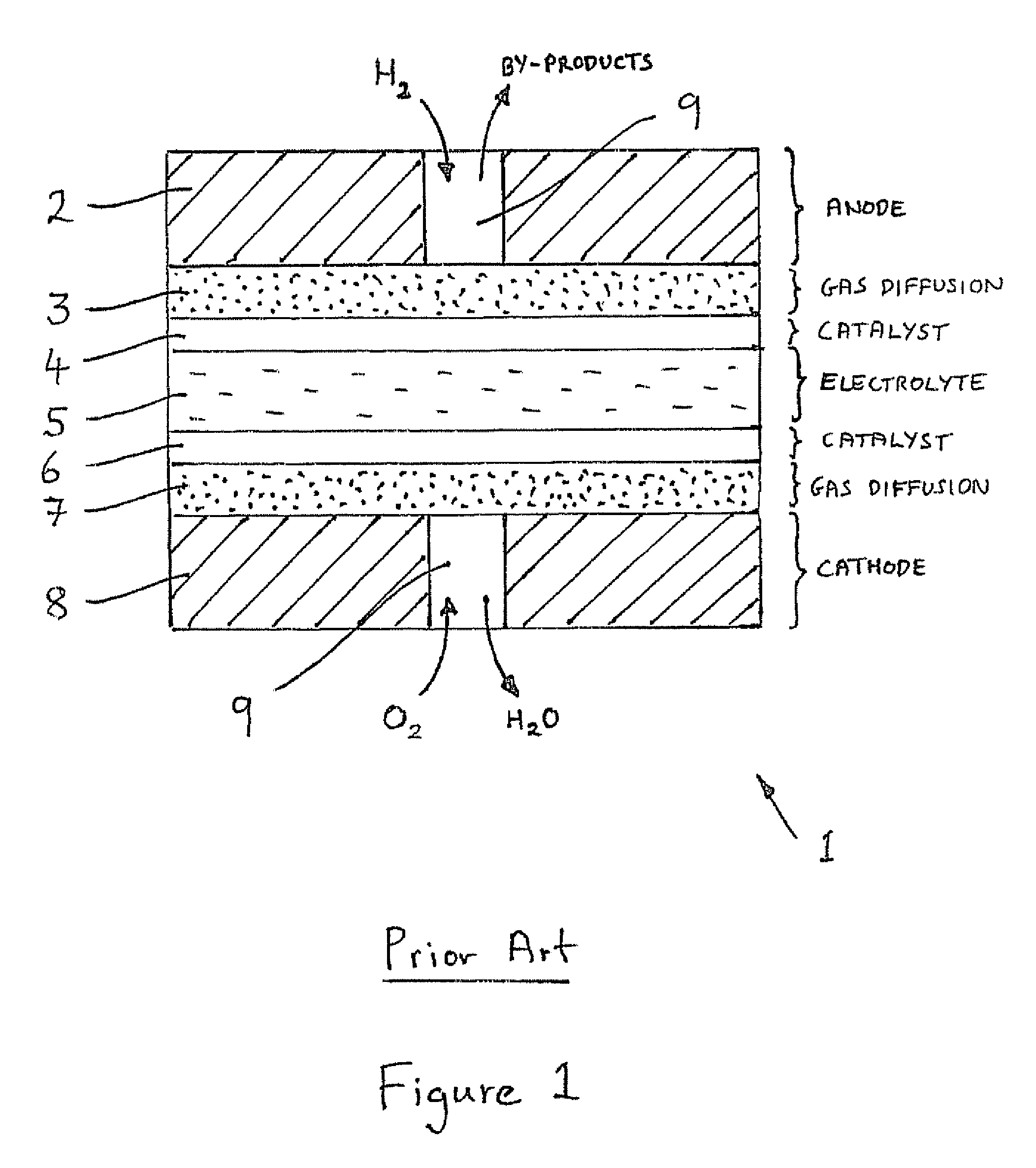Solid electrolyte fuel cell comprising an electrocatalyst/electrolyte assembly supported by a nano-structured material
a solid electrolyte fuel cell and nano-structured material technology, applied in the direction of fuel cell details, cell components, electrochemical generators, etc., can solve the problems of reducing the life expectancy of the cell, and achieve the effect of maximizing catalytic activity
- Summary
- Abstract
- Description
- Claims
- Application Information
AI Technical Summary
Benefits of technology
Problems solved by technology
Method used
Image
Examples
Embodiment Construction
[0026]Referring to FIG. 2 there is shown a membrane electrode assembly 20 (MEA) for a solid acid fuel cell in accordance with the invention. The MEA 20 comprises: an anode electrode 21; a first electrocatalyst / electrolyte assembly 22-24, a second electrocatalyst / electrolyte assembly 25-27 and a cathode electrode 28. The first electrocatalyst / electrolyte assembly comprises carbon fiber paper 22 having a carbon nanotube / electrocatalyst layer 23 formed thereon and a thin film layer of solid acid electrolyte layer 24. Likewise, the second electrocatalyst / electrolyte assembly comprises a carbon fiber paper 27 having a carbon nano-tube / electrocatalyst layer 26 formed on its surface and a thin film of solid acid electrolyte 25 deposited on the electrocatalyst / carbon nano-tube.
[0027]In this embodiment the anode 21 and cathode 28 are made of stainless steel and have a series of passages, holes, 29 passing through their entire thickness to enable fuel (e.g. hydrogen H2, methanol CH3OH4, ethan...
PUM
| Property | Measurement | Unit |
|---|---|---|
| temperatures | aaaaa | aaaaa |
| temperatures | aaaaa | aaaaa |
| diameter | aaaaa | aaaaa |
Abstract
Description
Claims
Application Information
 Login to View More
Login to View More - R&D
- Intellectual Property
- Life Sciences
- Materials
- Tech Scout
- Unparalleled Data Quality
- Higher Quality Content
- 60% Fewer Hallucinations
Browse by: Latest US Patents, China's latest patents, Technical Efficacy Thesaurus, Application Domain, Technology Topic, Popular Technical Reports.
© 2025 PatSnap. All rights reserved.Legal|Privacy policy|Modern Slavery Act Transparency Statement|Sitemap|About US| Contact US: help@patsnap.com



